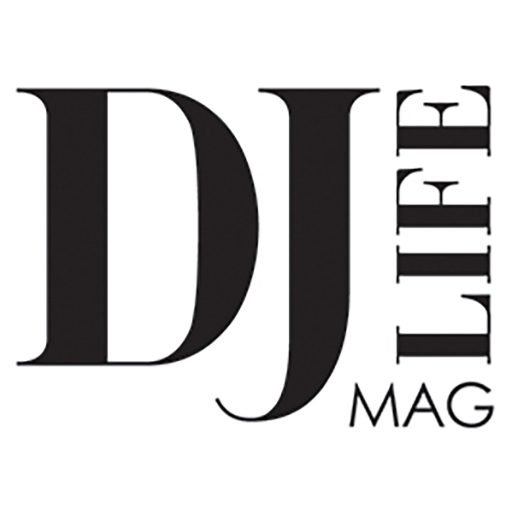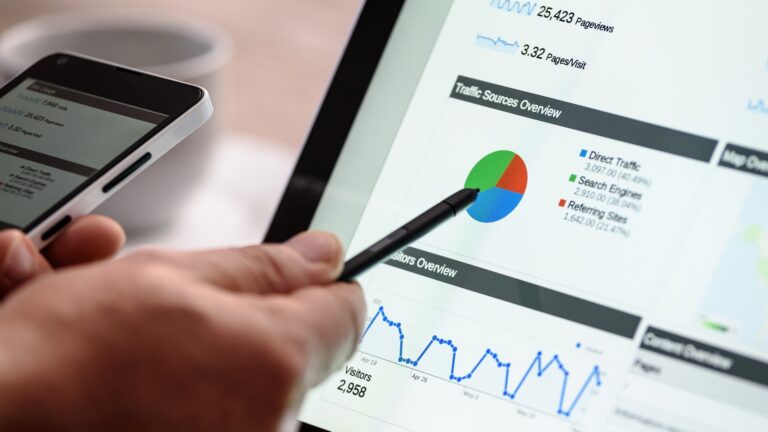Insights into what a ranking position means for your DJ brand, and what you can expect to obtain with an SEO investment.

Anyone who runs a DJ company wants to know how often their company website is searched online by potential clients. And with that comes the understanding of SERPs (i.e., Search Engine Results Pages).
What are they and why are they important for any company with an online presence? Simply, SERPs refer to the results displayed by a search engine in response to a user’s query or search term input. Pretty important, right?
In the past, these results were typically organized into multiple numbered pages, and users would navigate through them by clicking on page numbers. However, there has been a shift in the last year towards a dynamic and continuous browsing experience, known as infinite scroll.
In the infinite scroll format, instead of separate pages, users are presented with a continuous stream of search results that load automatically as they scroll down the page. This eliminates the need for users to click through different pages manually. The transition to infinite scroll has been adopted by many search engines.
Before the adoption of infinite scroll, heatmaps, and click-through rates often showed a notable increase in user interaction with the bottom results of a page and the top results of the subsequent page. This phenomenon was attributed to users’ browsing behavior, as they tended to focus their attention on the initial results and then gradually move down the page.
With the introduction of infinite scroll, this pattern of user behavior still holds true to some extent. However, the impact is not as dramatic as it used to be. As users scroll through the results, the continuous flow of new content can lead to a more seamless exploration of the search results. Consequently, the distinction between the top results of one page and the bottom results of the previous page becomes less pronounced.
In summary, SERPs have undergone a transition from traditional pagination to the adoption of infinite scroll, resulting in a more fluid and continuous browsing experience for users. While the influence of bottom results and top results on subsequent pages remains relevant, the introduction of infinite scroll has brought about a change in the user interaction patterns and the dynamics of search result engagement.
The implementation of infinite scrolling on SERPs brings about subtle changes in user behavior and click-through rates (CTR). The fundamental principle that higher-ranked listings receive more clicks remains true. However, the seamless scrolling experience may motivate users to explore a greater number of results compared to a paginated SERP. This can have an impact on CTRs for listings lower down the list.
In traditional paginated SERPs, users were limited by the number of results displayed on each page. They had to manually navigate to subsequent pages to view more listings. As a result, users tended to focus more on the top results and were less likely to reach the bottom of the page or click through to the next page.
With infinite scrolling, the continuous flow of results encourages users to continue scrolling and exploring additional content. This can lead to increased visibility for listings located lower down the page. As users scroll, they may come across listings they might not have seen on a paginated SERP, thus influencing their click behavior.
While higher-ranked listings still have a greater likelihood of attracting clicks due to their prominent position, the presence of infinite scrolling may distribute user attention and engagement more evenly across the entire list. Users may now be more inclined to explore deeper into the search results, resulting in improved CTRs for listings beyond the initial top positions.
It’s important for websites to consider the implications of infinite scrolling on their organic search performance. While top rankings continue to be valuable, optimizing content and improving visibility for lower-ranked listings can become increasingly important in capturing user attention and driving clicks.
Overall, the adoption of infinite scrolling on SERPs introduces changes to user behavior and CTR patterns. Higher-ranked listings still hold an advantage, but the seamless scrolling experience encourages users to explore more results, potentially impacting CTRs for lower-ranked listings.
Let’s go over the new normal with respect to these behaviors.
SERP Sections
SERPs, or Search Engine Results Pages, are composed of various sections that play vital roles in influencing click-through rates (CTR) and guiding users in their search journey. These sections include organic listings, paid listings, knowledge graphs, local packs, and shopping results. The specific sections displayed to a user and their order depend on the user’s query and search context.
- Organic Listings: These are the non-advertisement results that are ranked based on their relevance to the user’s query. They are usually displayed as clickable blue titles, accompanied by a brief description or snippet of the webpage’s content. The ranking of organic listings is determined by various factors, including the search engine’s algorithm, the quality of the website’s content, and its relevance to the user’s query.
- Paid Listings: These are advertisements that appear at the top or bottom of the search results page. They are marked as ads and are often displayed before the organic listings. Paid listings are typically created by advertisers who bid on specific keywords relevant to their products or services. The ranking of paid listings is influenced by the advertiser’s bid amount, ad quality, and relevance to the user’s search query.
- Knowledge Graphs: Knowledge graphs are information boxes that provide concise and structured data related to the user’s query. They are designed to provide immediate answers or quick access to relevant information without the need to visit a specific website. Knowledge graphs may include facts, images, maps, definitions, or other types of information directly extracted from trusted sources.
- Local Packs: Local packs appear for location-specific searches and display a map alongside a list of local businesses relevant to the query. They often include basic details such as the business’s name, address, phone number, ratings, and reviews. Local packs are particularly useful for users seeking nearby services or establishments, such as restaurants, hotels, or retail stores.
- Shopping Results: These sections display product listings and related information for queries with commercial intent. Shopping results typically include images, prices, reviews, and links to purchase the products from various online retailers. They enable users to compare products and make informed buying decisions directly from the search results page.
The order and presence of these sections on SERPs can vary based on the specific query and the user’s geographical location, search history, and device type. Search engines aim to present the most relevant and helpful information to users by considering a combination of factors, including the user’s intent, the quality of available content, and the relevance to the search query.
Statistics
In any search, the top few results, particularly the first three, continue to receive the majority of clicks. These high-ranking results also convey a sense of authority and reliability to users, which can significantly influence the perceived credibility of a website. Consequently, the goal of appearing near the top of the Search Engine Results Page (SERP) remains extremely important, even in the age of infinite scrolling.
Some Quick Hitters…
- Ranking No. 1 for your organic result is 10-times more likely to receive a click than a page in the No. 10 spot.
- Increasing your ranking from position No. 2 to No. 1 results in 74.5-percent more clicks.
- The top 3 results get over half of all SERP clicks.
- On average, moving up one spot in the search results will increase CTR by 2.8-percent.
- Moving from position No. 3 to No. 2 boosts the CTR significantly.
- However, moving from No. 10 to No. 9 doesn’t make a statistically significant difference.
- Organic CTR for positions 8-10 is virtually the same.
- The majority of queries a site ranks for in Google get very few impressions, with 90.3-percent of all queries having only 10 impressions or less.
Page Title Impact
- Titles with or without questions have similar CTRs.
- Title tags between 40 to 60 characters have the highest CTR.
- Longer keywords (10-15 words) get 1.76-times more clicks than single-word terms.
- Positive titles have a 4.1-percent higher absolute CTR compared to negative ones.
- Keywords between 10-15 words get 2.62-times more clicks than single-word terms for the No. 1 position.
- Emotional titles can lead to a higher click-through rate in organic results.
Page URL Impact
- URLs containing terms similar to a keyword have a 45-percent higher CTR than those without.
- Remember that while a keyword in a meta description may not impact rank, it can impact the CTR because it’s highlighted on the search result.
Watch Out for Bad Actors
It’s easy to understand the frustration with the SEO industry and the misleading solicitations that often come from consultants and agencies. Many of them make big promises without truly understanding your business and its specific needs. Here are a few examples of these misleading statements and my responses:
“I reviewed your site and noticed you weren’t ranking well.”
Response: Without conducting thorough research and analysis of your business, competitors, and current rankings, it’s impossible for an SEO consultant or agency to accurately determine whether your site is ranking poorly or well in terms of actual business results. Simply stating that your site is not ranking well without providing specific details is not helpful.
“We can get you on Page 1!”
Response: Page 1 for what keywords? And how high on Page 1? It’s relatively easy to achieve a Page-1 ranking for certain unique or branded terms that have low competition. However, the real question is whether that ranking will generate meaningful business results. No SEO consultant or agency can guarantee a No. 1 ranking on a highly competitive keyword because it depends on numerous factors and constant algorithm changes.
“We can generate the backlinks that get you ranked!”
Response: Buying backlinks is a common practice in the industry, but it goes against Google’s policies and is considered link spam. While you may see a temporary boost in rankings, it’s likely that your site will eventually suffer and get penalized by search engines. It’s important to focus on building high-quality, organic backlinks through legitimate strategies that provide long-term value and enhance your site’s credibility.
“SEO is no longer a siloed initiative.”
Response: I agree that SEO should not be treated as a separate, isolated effort. It’s beneficial to work with a marketing consultant or agency that understands your business holistically. They can help develop comprehensive strategies, including content creation, off-site promotion, and technical SEO, to improve your website’s visibility in search engines and drive relevant traffic. Taking a more integrated approach to marketing will yield better results.
In summary, it’s essential to be cautious when evaluating SEO solicitations and to seek out reputable consultants or agencies that prioritize a comprehensive understanding of your business goals and employ legitimate, long-term strategies for improving your online presence.
Jordan St. Jacques is the President/Lead Digital Marketer at Digitera.Interactive in Ottawa, Ont., Canada.


